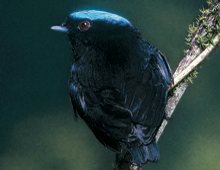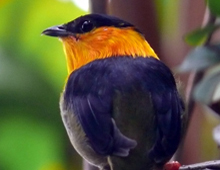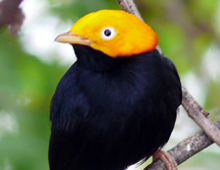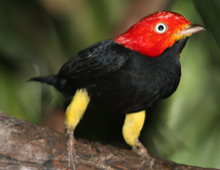
Compared to some other manakins, the male Blue-crowned manakin performs a quieter display, bowing its brilliantly colored head forward while giving a musical trill. Despite having an extensive range, from Costa Rica and Panama, all the way south to Bolivia, it has always been rare in captivity






